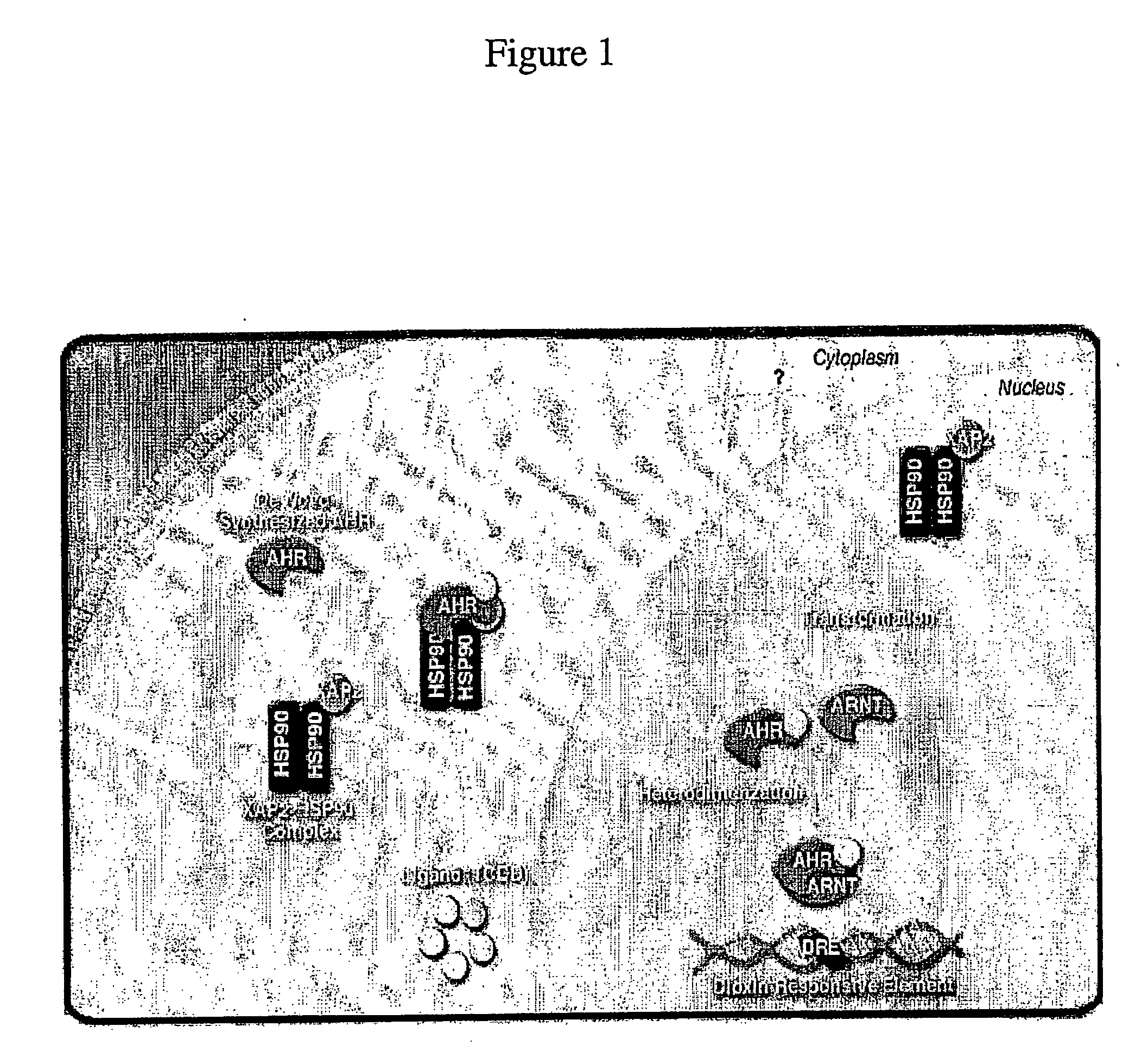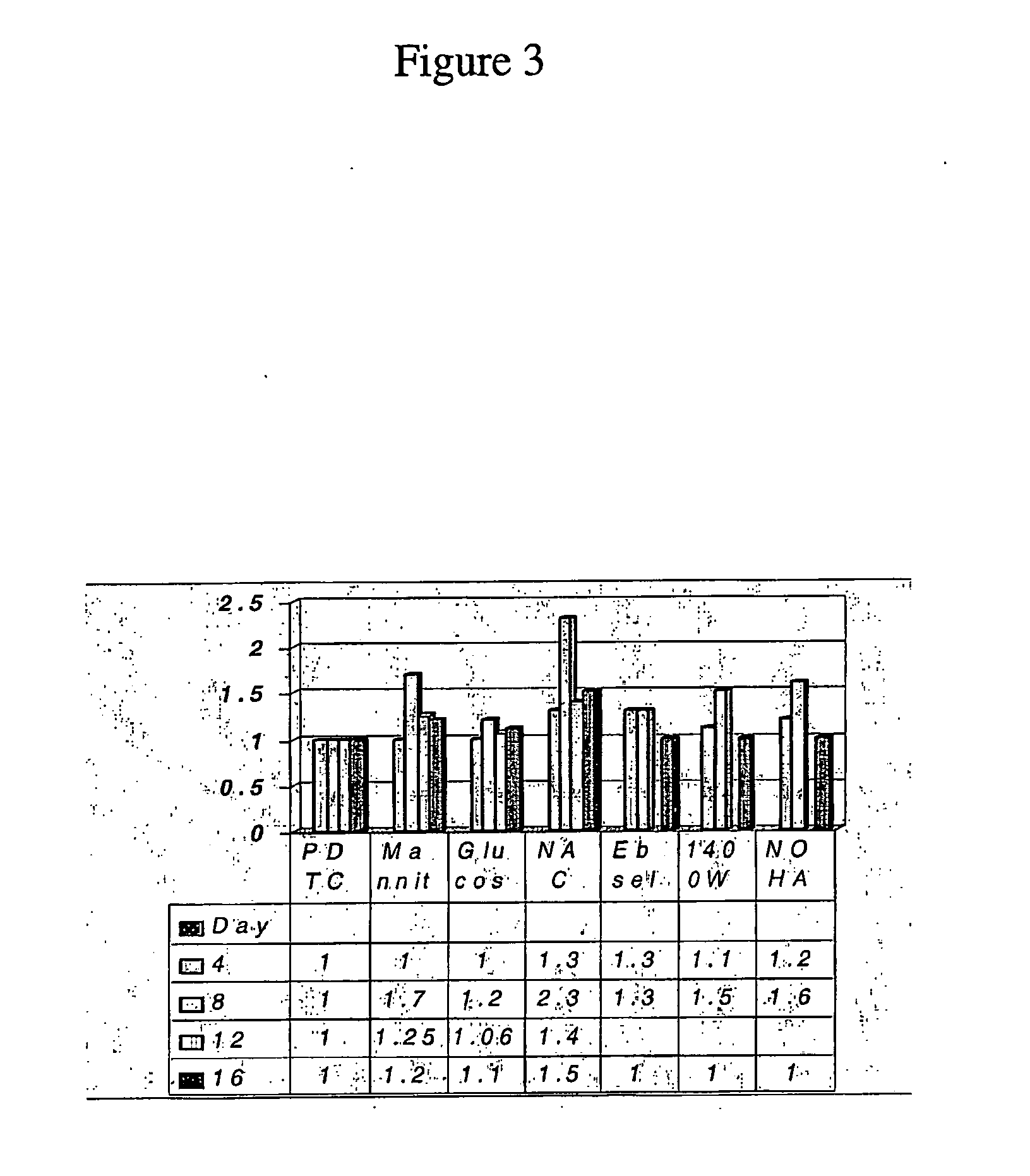Methods for perfusion and plating of primary hepatocytes and a medium therefore
a technology applied in the field of methods for perfusion and plating of primary hepatocytes and a medium therefore, can solve the problems of limiting their usefulness, affecting the function of differentiation, and affecting the survival of patients, so as to increase intracellular glutathione and maintain function and/or viability.
- Summary
- Abstract
- Description
- Claims
- Application Information
AI Technical Summary
Benefits of technology
Problems solved by technology
Method used
Image
Examples
example 1
Modulation of Reactive Oxygen and Nitrogen Species in Freshly Isolated Hepatocytes, and its Effect on Hepatocyte Phenotype and Function
[0091] To study the effect of different compounds on the function of hepatocyte function and phenotype, hepatocytes were isolated according to techniques well known in the art and cultured in a collagen sandwich configuration. Hepatocytes were induced with the addition of 2 nM 3-methylcholanthrene (3-MC). CYP 1A1 was measured using the EROD assay as described in Pearce et al., 1996. Albumin secretion was measured using ELISA, as described in Dunn et al., 1991. Western blot analysis was performed using techniques well known in the art, using an antibody to CYP1A1.
[0092] The CYP 1A1 induction mechanism is depicted in FIG. 1. FIG. 2 is a table describing the mechanism of redox control for various treatments.
[0093]FIG. 3 is a graph showing the fold induction of urea synthesis in hepatocytes treated with a variety of compounds and cultured for 16 days,...
example 2
Rat Primary Hepatocytes
[0099] The function of rat primary hepatocytes prepared using the methods of the present invention were analyzed. The average fold-increases in EROD activity in rat primary hepatocytes treated and untreated was determined, as shown in FIG. 8. The numbers are averages, with levels greater than 1.2 being significant. EROD is ethoxyresorufin O deethylase activity, which is also known as p450 CYP 1A1, an important drug metabolizing enzyme, and is a marker of general drug metabolizing activity in primary hepatocytes.
example 3
Mouse Primary Hepatocytes
[0100] The function of mouse primary hepatocytes using the methods of the present invention was also examined. Using OTZ and tochpheral succinate using the present method, we were able to maintain a mammalian hepatocyte for greater than 50 days after isolation as well as maintaining EROD activity for such a period. See FIG. 9. There is almost no EROD activity in the untreated group, but 3.5 fold in the treated group. Experiments were done in quadruplicate, with the average shown.
PUM
 Login to View More
Login to View More Abstract
Description
Claims
Application Information
 Login to View More
Login to View More - R&D
- Intellectual Property
- Life Sciences
- Materials
- Tech Scout
- Unparalleled Data Quality
- Higher Quality Content
- 60% Fewer Hallucinations
Browse by: Latest US Patents, China's latest patents, Technical Efficacy Thesaurus, Application Domain, Technology Topic, Popular Technical Reports.
© 2025 PatSnap. All rights reserved.Legal|Privacy policy|Modern Slavery Act Transparency Statement|Sitemap|About US| Contact US: help@patsnap.com



